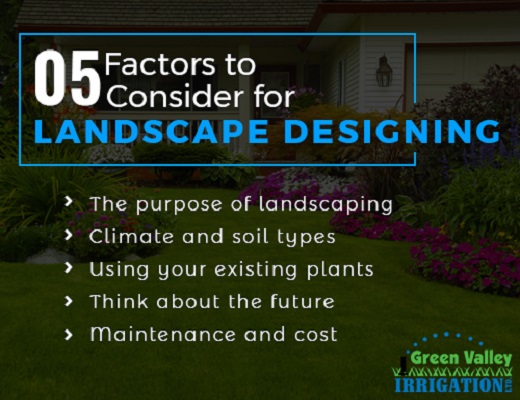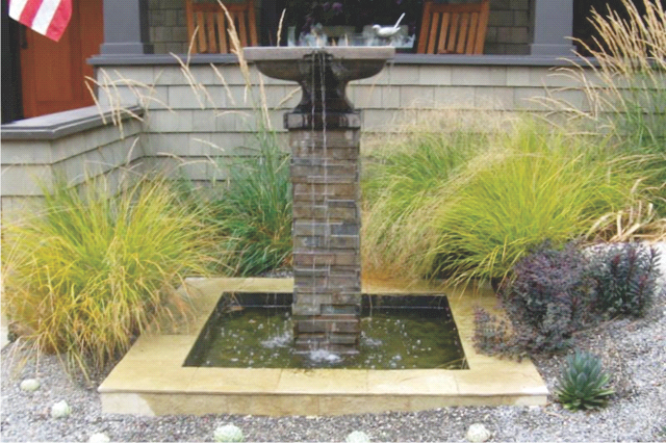Not known Details About Hilton Head Landscapes
Not known Details About Hilton Head Landscapes
Blog Article
Hilton Head Landscapes Things To Know Before You Buy
Table of ContentsThe Greatest Guide To Hilton Head LandscapesLittle Known Questions About Hilton Head Landscapes.The Only Guide for Hilton Head LandscapesThe Best Guide To Hilton Head LandscapesGetting The Hilton Head Landscapes To WorkGetting My Hilton Head Landscapes To WorkThe 20-Second Trick For Hilton Head Landscapes
Line develops all forms and patterns and can be made use of in a selection of methods the landscape. Line in the landscape is produced by the edge in between two products, the outline or silhouette of a form, or a lengthy straight feature. Lines are an effective tool for the developer because they can be used to produce a limitless range of shapes and kinds, and they regulate motion of the eye and the body.

Lines can have one or more attributes, such as those defined listed below, yet they normally offer various functions. Number 1. Lines in the landscape - landscapers in bluffton sc. The buildings of lines determine just how people react to the landscape, both emotionally and physically. Straight lines are architectural and strong; they produce a formal personality, are normally related to a symmetrical style, and lead the eye straight to a focal point.
The Ultimate Guide To Hilton Head Landscapes
Straight lines are usually found in hardscape edges and material. Rounded lines produce an informal, natural, loosened up personality that is associated much more with nature and asymmetrical equilibrium. Curved lines relocate the eye at a slower pace and include enigma to the room by creating hidden views. Vertical lines move the eye up, making a space really feel bigger.
Vertical lines in the landscape consist of high, slim plant material, such as trees, or tall structures, such as an arbor or a bird residence on a post. Straight lines move the eye along the ground plane and can make a space really feel bigger. Low lines are extra restrained and produce a sensation of remainder or repose.
Get This Report on Hilton Head Landscapes
Low lines are produced by reduced garden wall surfaces, pathways, and brief hedges. Lines are made use of to draw kinds on a plan. In strategy sight, they define plant beds and hardscape locations. Lines are also developed by the vertical kinds of developed attributes and plant material. There are 3 primary line types that create form in the landscape: bedlines, hardscape lines, and plant lines.
Bedlines link plant material to your house and hardscape because the eye follows the line, relocating the look through the landscape. Hardscape lines are developed by the edge of the hardscape, which defines the developed framework. Line can additionally be produced by lengthy and slim materials, such as a fence or wall surface.
Hilton Head Landscapes Things To Know Before You Get This
Type is discovered in both hardscape and plants, and it is normally the leading aesthetic component that spatially arranges the landscape and usually establishes the design of the yard. The kind of frameworks, plant beds, and yard ornaments likewise figures out the overall form theme of the garden. Official, geometric types include circles, squares, and polygons.
Plants produce form in the yard with their lays out or silhouettes, but kind can additionally be specified by a space or unfavorable space between plants - landscapers in bluffton sc (https://www.reverbnation.com/artist/hiltonheadlandscapes). Circles can be full circles, or they can be separated right into half circles or circle segments and incorporated with lines to produce arcs and tangents
A Biased View of Hilton Head Landscapes
Circles can likewise be stretched right into ovals and ellipses for more selection and rate of interest. Circles are a solid style form since the eye is constantly drawn to the facility, which can be utilized to stress a centerpiece or link other kinds. Figure 2. Circular kinds in hardscape and lawn panels.
The square kind can also be fractional and pre-owned repetitively to create a grid pattern. Unlike circles, squares are stronger on the sides, which can be aligned or overlapped to create special patterns and even more intricate forms. Polygons are many-sided types with straight sides. Triangulars, as an example, are three-sided polygons.
Meandering lines often simulate the all-natural training course of rivers or streams and can be defined as smooth lines with deeply rounded undulations. Twisting lines (Number 3) function well for pathways, plant bedlines, and completely dry stream beds. Meandering lines can add rate of interest and secret to a yard by leading viewers around corners to find new views and areas.
The Main Principles Of Hilton Head Landscapes

Number 5. Fragmented edges: stepping stones in pathway. Form is one of the most long-lasting high quality of a plant (landscape design hilton head). https://disqus.com/by/disqus_mvAiTQ3jyY/about/. Typical plant forms are well established and standard, as type is the most consistent and well-known feature of plants. Type can also be created via the massing of plants, where the general mass creates a various kind than a private plant.
A very contrasting type needs to be made use of with careone or 2 job well as a centerpiece, but also numerous wreak havoc. Natural plant types, instead of over-trimmed forms, need to develop the bulk of the make-up. The significance of overall form is basically reliant on the checking out perspectivethe form of a tree can show up fairly different to an individual standing under the canopy versus checking out the tree from a range in an open field.
The Best Strategy To Use For Hilton Head Landscapes
Plant kinds also create and define the space or open areas in between the plants, developing either convex or scooped forms in the voids. High-arching tree branches commonly create a concave open space under the branches, and a round canopy with low branches fills up the space to create visite site a convex form outdoors area under the tree.

Report this page